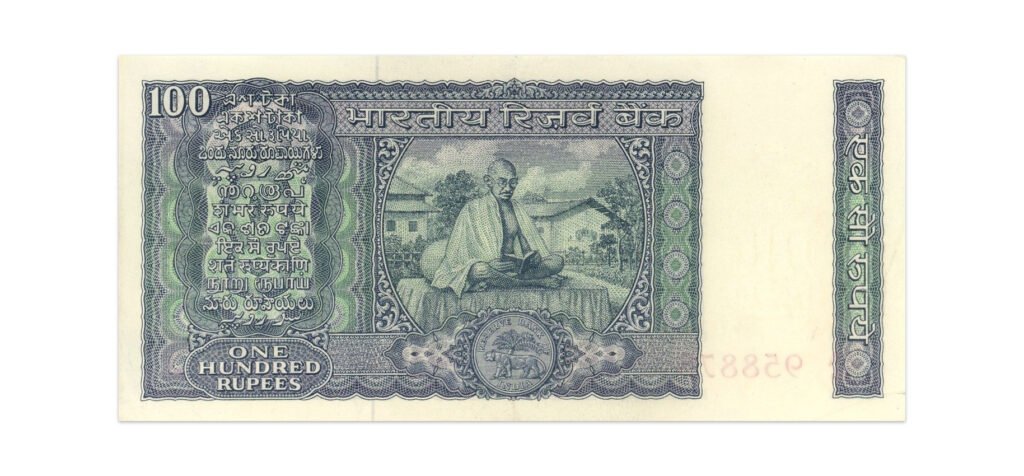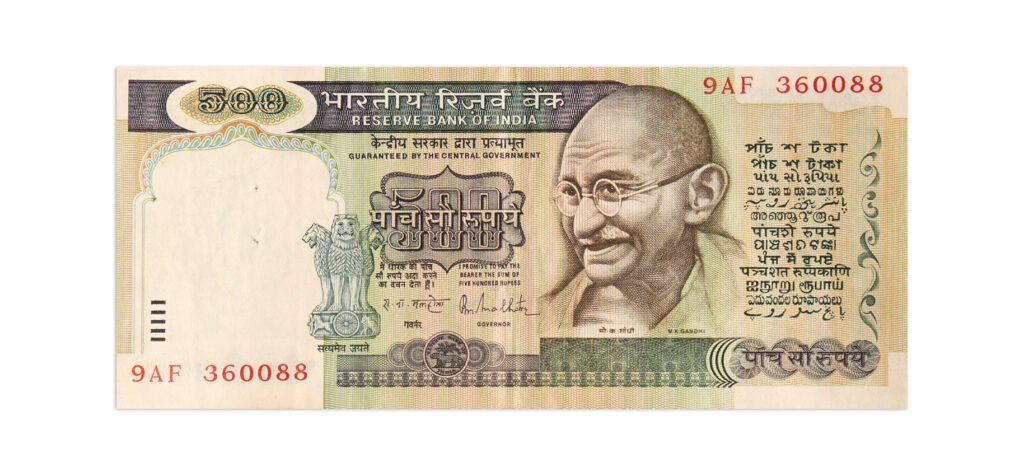

No products in the cart.
No products in the cart.
Mahatma Gandhi, the Father of the Nation, is a prominent figure in India’s history. His image on Indian currency is a symbol of his enduring legacy. But when did Gandhi’s photo first appear on Indian banknotes? Let’s explore this significant moment in history.
After India gained independence in August 1947, the RBI continued to issue notes from the colonial era that depicted King George VI.
The government of India introduced new 1-rupee notes in 1949, replacing King George with a representation of the Lion Capital of Ashoka Pillar at Sarnath.
The subsequent release of banknotes in 1950, in denominations of Rs 2, 5, 10, and 100, featured the Lion Capital watermark, maintaining continuity with earlier designs.
Mahatma Gandhi’s image was first introduced on Indian banknotes in 1969, through a special series issued to commemorate his 100th birth anniversary. These notes, featuring Gandhi alongside the Sevagram Ashram, bore the signature of RBI governor LK Jha.

In October 1987, a series of Rs 500 currency notes featuring Gandhi was introduced.

The portrait of Gandhi on Indian banknotes is not a caricature but a cut-out from a 1946 photograph featuring him alongside British politician Lord Frederick William Pethick-Lawrence.
This particular photograph was chosen for its ideal depiction of Gandhi’s smiling visage, and the portrait is a mirrored image of the cut-out.

By the 1990s, the RBI recognized the need for enhanced security features on currency notes due to advancements in reprographic techniques. A human face was deemed less susceptible to forgery than inanimate objects.
Mahatma Gandhi’s national significance made him the ideal choice. In 1996, the RBI introduced a new ‘Mahatma Gandhi Series’ of banknotes, replacing the previous Ashoka Pillar notes and incorporating advanced security features.
In 2016, the RBI introduced the new Mahatma Gandhi Series, starting with the ₹500 and ₹2000 notes. This series features a slightly updated portrait of Gandhi, along with enhanced security features and a more contemporary design.
Gandhi’s philosophy of non-violence and his leadership in the Indian independence movement made him a natural choice for the new series of banknotes. His image represents not just the struggle for independence, but also the values of peace, tolerance, and the spirit of Indian democracy.

As digital transactions rise, physical banknotes and coins are becoming historical treasures. By collecting them, you help preserve a piece of our history. At Dazzle Monk, we offer a carefully curated Numismatic, Notaphily collection of authentic and rare items. Start your journey with us today.

Copyright © 2024 Dazzlemonk.com. Created and Maintained by The Grafik Guru.
Add comment